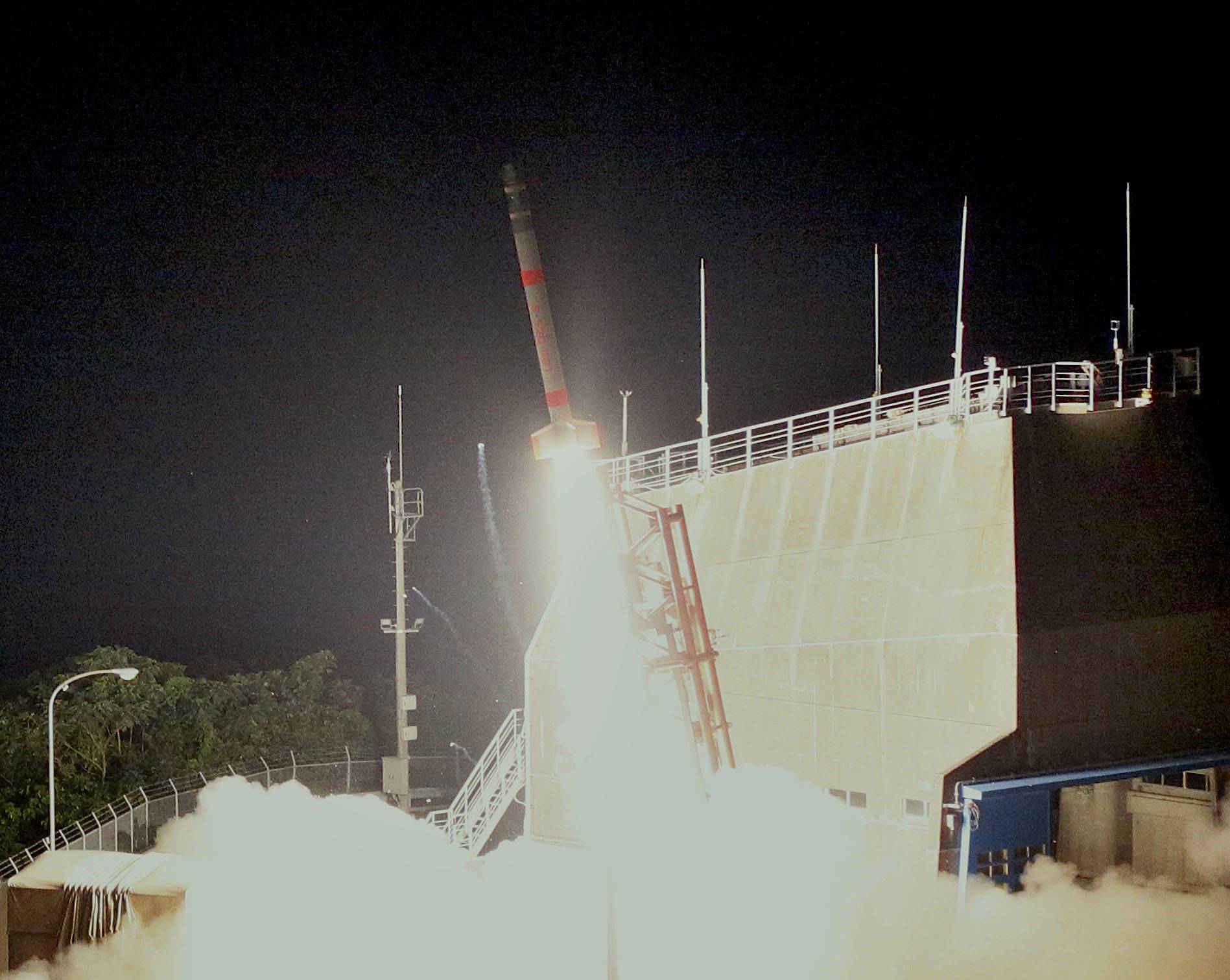Aerospace
Japan completes hypersonic engine test successfully
The first flight test of an indigenous scramjet engine was successfully completed by the Japan Aerospace Exploration Agency (JAXA), achieving hypersonic speeds while landing.

According to report The first flight test of an indigenous scramjet engine was successfully completed by the Japan Aerospace Exploration Agency (JAXA), achieving hypersonic speeds while landing. An S-520-RD1 rocket was used for the engine testing. The one-stage sounding rocket is approximately 9.15 metres long and weighs roughly 2.6 tonnes in total. It was launched on July 24, 2022, from the southern Kyushu region of Japan’s Uchinoura Space Center.
During hypersonic flight, a scramjet engine extracts the oxygen required for burning from the atmosphere. Because a scramjet does not require liquid oxygen, it can be utilised for hypersonic aircraft as well as spaceplanes that travel between Earth and space. A 9.15-meter-long piece of testing equipment attached to the S-520-RD1 was released after the launch at 5 a.m. on Sunday, reaching an altitude of 150 kilometers.
When the device’s speed reached Mach 5.5 during its descent, a combustion test was carried out for roughly six seconds at a height of around 30 kilometers. In charge JAXA official Koichiro Tani said at a news conference, “We achieved a certain level of success. We aim to build an actual engine and do a flight test as the following phase, he added. The collected data will be put to use in ground-based wind tunnel studies. Many nations are competing to create scramjet engines, which are anticipated to aid in the creation of longer-range missiles.
The most recent test is a component of research authorized by the Acquisition, Technology & Logistics Agency under a national security technology research promotion programme associated with the Defense Ministry. About 1.8 billion was given to JAXA by ATLA to meet the expenses.

Aerospace
Boeing Transfers Rocket Stage to NASA, Paving Way for Human Moon Mission

Boeing has achieved a significant milestone by providing NASA with the second core stage of the Space Launch System (SLS) rocket.
This crucial component, crafted at NASA’s Michoud Assembly Facility (MAF), is set to propel the Artemis II crew into lunar orbit, marking humanity’s return to deep space after a 50-year hiatus.
The monumental Boeing-built rocket stage, the largest element of the Artemis II mission, will embark on a journey aboard the Pegasus barge, traveling 900 miles to NASA’s Kennedy Space Center.
Comparison of two legendary aircraft B777x vs B747 aircraft:Click here
Upon arrival, it will be meticulously integrated with other essential Artemis II components, including the upper stage, solid rocket boosters, and NASA’s Orion spacecraft within the iconic Vehicle Assembly Building. This intricate integration process is a vital step toward the eagerly anticipated Artemis II launch, slated for 2025.
“Boeing-built products helped land humankind on the moon in 1969, and we’re proud to continue that legacy through the Artemis generation,” remarked Dave Dutcher, vice president and program manager for Boeing’s SLS program. “Together, with NASA and our industry partners and suppliers, we are building the world’s most capable rocket and paving the way to deep space through America’s rocket factory in New Orleans.”
NASA, Lockheed Martin Reveal X-59 Quiet Supersonic Aircraft:Click here
The delivery of Core Stage 2 marks a significant achievement in the evolution of the SLS rocket. Towering over 200 feet and powered by four RS-25 engines, this core stage, coupled with two solid-fueled booster rockets, will generate a staggering 8.8 million pounds of thrust. This immense power is crucial to launching Artemis II and future missions into the vast expanse of space.
The SLS rocket stands unparalleled in its capability to transport both crew and substantial cargo to the moon and beyond in a single launch. Its extraordinary capacity will facilitate the delivery of human-rated spacecraft, habitats, and scientific missions to destinations including the moon and Mars, ushering in a new era of space exploration.
-

 Travel1 week ago
Travel1 week agoAir India to Expand US Operations with Three New Routes After a Decade
-

 Travel2 weeks ago
Travel2 weeks agoWhy We Should Avoid These Stamps in a Passport
-

 Airlines1 month ago
Airlines1 month agoInvestigations Reveal Fake Chinese Titanium in Boeing and Airbus Jets
-

 Tech4 weeks ago
Tech4 weeks agoChina’s CATL Plans 1,800-Mile Electric Plane Launch by 2027
-

 Airport3 days ago
Airport3 days agoTop 10 Largest Airports in the World by Size
-

 Aerospace4 weeks ago
Aerospace4 weeks agoChina’s Fighter Jets Turn Wings into Autonomous Drones
-

 Airlines4 days ago
Airlines4 days agoAir India Rolls Out A350s for Delhi-New York JFK and Newark Routes
-

 Defence3 weeks ago
Defence3 weeks agoBoeing Enhances Chinook with New Engines and Block II Upgrades at $96 Million







